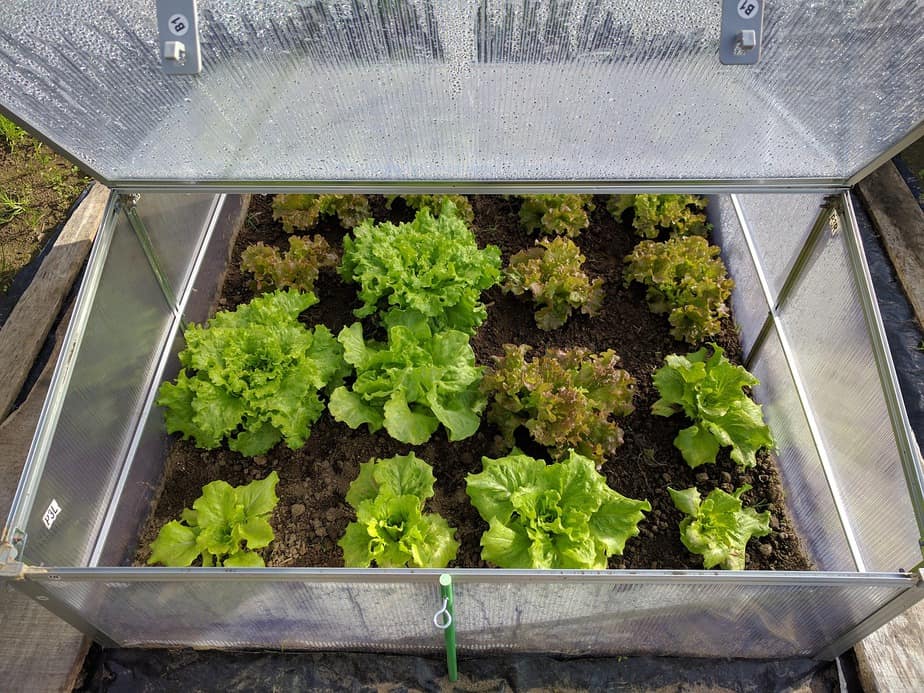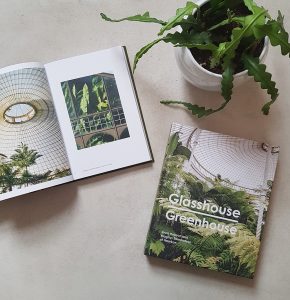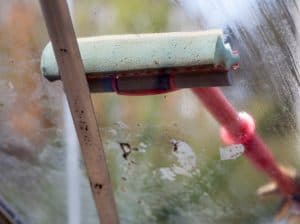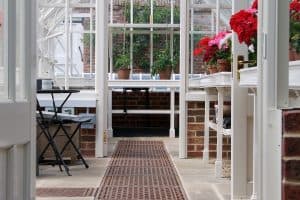Anyone who has ever been interested in gardening would have heard about the different tools and techniques used to ingratiate the green thumb. However, if you are not a person with technical knowledge, an amateur gardener at best, you might not be really familiar with most of the tools and techniques that can help you get the garden or plants of your dreams.
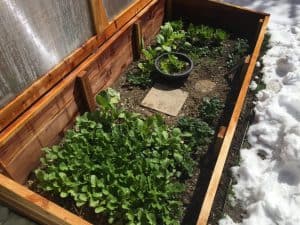
Some of these tools and techniques are so easy to construct and use that you can do it all on your own. It is better to start with something that we all have heard about at some point in our lives: greenhouses and coldframes. So, what’s the difference between coldframes and greenhouses?
I am sure most of you, if not all, have a basic idea about what greenhouses are. Some of you might even be familiar with cold frames. But to understand the two in a little more detail can help us distinguish the similarities and differences that might exist.
The Difference Between Coldframes and Greenhouses
Cold Frames and Greenhouses: What Are They?
To get a better hang of the two, it is important to first understand what greenhouses and cold frames are. Greenhouses, also known as glasshouses, are a large structure that is made of glass, or a similar transparent material, in which plants are grown. The weather conditions in greenhouses are closely monitored and regulated so that plants can be grown as per requirement.
Greenhouses can largely vary in size. They can be small sheds that occupy a limited space and they can be as large as an entire factory or industrial construction. The purpose of greenhouses is to provide a warmer climate than that prevalent outside so that plants can easily grow and thrive in seasons when the weather is cold. There are quite a few greenhouses that are even used for commercial purposes nowadays.
These glass structures, with the use of the latest technology, provide favorable settings for mass producing different kinds of flowers and vegetables. Such greenhouses are lined with high tech equipment such as screens, sensors, lights, heaters, and cooling systems. They may be regulated by computers that make sure ideal conditions are being provided for plants to grow efficiently.
Do you need a license or permit to build that greenhouse? Click the link to find out!
Cold frames, on the other hand, are used in gardening and agriculture. As the name suggests, these are relatively small sized boxes with a transparent roof. It is often built closer to the ground with the purpose of protecting plants and vegetation from harsh weather conditions. The transparent lid of the cold frame allows sunlight to seep in and acts as an insulator. It traps the heat from the sunlight and provides a warm setting in which plants can grow.
Overall, the cold frame is a mini or smaller version of a greenhouse and pretty much has the same use. It allows for a safe space for plants to grow and a longer period of growth than the normal one. Cold frames are often found in gardens and farms that grow vegetables on a smaller scale (perfect for a backyard). They help create microclimates that mimic weather conditions suitable for a particular plant or vegetable. The air, temperature of the soil and protection against harsh climatic conditions, particularly severe cold, are few of the factors cold frames regulate. They provide favorable conditions for seeds to start growing and once stable; they can be planted out in the open.
Types of Cold Frames
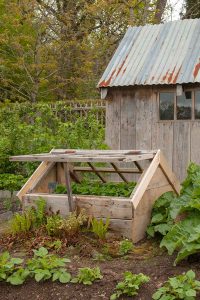
Depending on the plants that need to be grown and taken care of, cold frames can take many different forms and thus can have numerous types. However, the ones most commonly used are briefly described below:
- A sunken cold frame: This type of cold frame is one that can easily be made at home as well. It tends to be below the normal surface. Cinder blocks are used to make walls and they are covered with a strong plastic covering that acts as the lid. This type of a cold frame is best for plants that cannot survive harsh winters as well as those seedlings that need to be stabilized before plantation in open ground.
- Plastic hoop tunnel: This cold frame uses plastic hoops that are covered with a plastic sheet to make a tunnel-like structure. This type of a cold frame is best for warming up the soil after winter, for the spring season planation. It also helps protects plants and vegetation against frost.
- A wooden portable cold frame: This type of frame can easily be carried around and is not fixed in one place. It is a wooden frame that is covered with strong plastic that acts as the lid. This type of frame is used to extend the garnering time by a few weeks so that the plants and vegetables can grow to the maximum level. They also allow seeds to be directly sowed into the open ground during the spring season.
Types of Greenhouses
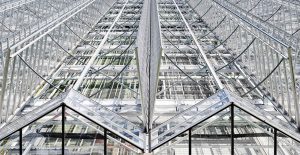
As with a cold frame, a greenhouse can also be of various types, shapes, and sizes. To give a little bit of an idea and overview, here are a few types of greenhouses that having knowledge of may help you:
- Multi-span structures: Such greenhouses consume less area than the traditional ones as they are relatively smaller in size. However, the production capacity is equal to single span structures. The main advantage of this greenhouse is that it loses less heat and so energy is conserved greatly. Also, their design is such that it can withstand severe weather conditions and suffer less damage.
- Shade houses: Shade houses are outdoor hydronic systems that allow excess moisture, air, and heat to space through gaps. This allows for a ventilation system that is safe for plants to grow.
- Dutch light: In the UK and some European countries in the north, a horticultural glass is used to make greenhouses. This type of greenhouse gives a large glazed place with sloped sides and if quite sophisticated in nature. These types of greenhouses are usually large in structure. They may also be very high tech often making use of computers, sensors, and regulators that can allow to better monitor the weather conditions and plant growth.
- Screen houses: These types of greenhouses are typically used in tropical and hot regions where the population of insects and pests is higher. They use insect screening materials to make a structure that keeps pests out of the greenhouse so that the plants can thrive. With a little bit of modification, they protect plants, flowers and vegetation from severe climatic conditions as well as help keep unwanted insects and pests out.
Greenhouses can also be categorized in terms of technology. They can range anywhere between low to middle and high technology structures. The higher the tech is, the more equipment, cost, and sophistication it has. High tech greenhouses are often used for commercial purposes where monitoring, controlling and evaluation are of the utmost importance. Depending on the use and need, buyers make a decision about what kind of greenhouse they want to invest in so that it can give the desired results.
If you think that a greenhouse is the ideal option for you, then give our pros and cons of greenhouses guide a read as it’ll help to inform your decision.
Similarities and Difference between the Two Structures
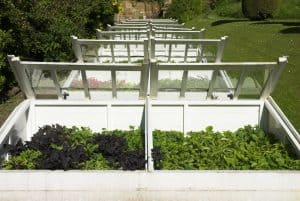
Oftentimes people fail to understand the difference between coldframes and greenhouses. While they see the similarities, they make false assumptions about the purposes of each. This is unfortunate as making an investment in such structures is both costly and pretty time-consuming. Sometimes products marketed as greenhouses turn out to be cold frames and fail to perform the tasks and meet the goals you are trying to achieve. Hence, it is always better to be aware of the different kinds of structures of both as well as their benefits.
As mentioned earlier, a cold frame functions as a miniature and smaller version of a greenhouse. In the past, cold frames were built along with greenhouses. Often times, you do see a cold frame with a greenhouse. The purpose of having the two together, especially in large commercial spaces is to germinate the seeds in a controlled environment provided by the greenhouse and then they can easily be moved to a cold frame. They can stabilize there and eventually be shifted to open plantation areas. Cold frames are very much similar to hothouses.
However, a greenhouse and cold frame do tend to have certain differences. A greenhouse can have two functions; it can be used as a hot box or a cold house. This is entirely dependent on the region and prevalent weather conditions in that region. During night time, a hot house can have a temperature of a minimum of fifty-five degrees. A cold house, on the other hand, can maintain a temperature of at least forty-five degrees during the night. It is also important to note that the temperatures are often controlled via computers and automation.
As opposed to this, a cold frame is used to elongate the growing period of a plant by more than the season. It can be extended by a few weeks. Since cold frames rely mostly on sunlight for heat, the temperature cannot be controlled. Many cold frames use single wall glazing. Therefore, there is not much insulation and only a limited amount of heat is trapped inside the cold frame during the night.
Cold frames generally allow passing the frost and snow season so that the soil can warm up during spring before the plants are planted outside. To explain this with an example, a cold frame can be used to provide a few extra days to tomatoes plants for the fruit to get ripened and juicy.
Another thing that people are often confused about is that if a structure is large, it is bound to be a greenhouse. Well, this is not always the case. Just like greenhouses, cold frames also come in a wide variety of shapes and sizes. It can be a small box with a glass lid on the side of a house or building and it can also be a cylindrical tunnel that is pretty long. Often such a tunnel can be seen in areas with commercial uses. Greenhouses can be used as cold frames, provided they are not artificially heated. However, a cold frame cannot become a greenhouse by simply adding heat to it.
Another difference between the two is that a cold frame can be purchased from the local nursery, and it can even be homemade so it is not complicated to get a hold of one. A greenhouse is a fairly large and complicated structure that usually come with a lot of other equipment. Therefore, it cannot be bought just from the local store. A thorough research and investment plan needs to be made before contacting the right institutions that you can purchase it from. There are small-scale DIY greenhouse options worth trying though.
Depending on how you want to use the two and the purpose of purchasing one, you can decide whether a cold frame or a greenhouse is the tool you are looking for. Investing in a greenhouse when all you need is a little shelter place for your kitchen garden where your fruits and vegetables can be protected from harsh weather conditions and can grow easily, will be a mistake and a huge waste of money.
At the same time, if you want to establish a safe growing space for flowers and such other vegetation for commercial purposes and they have a gestation period of a year where the environment needs to be constantly monitored and controlled so that the plants can grow properly, investing in a greenhouse is the way to go.
Patrick is a professional copywriter and a published ecologist. He spends too much time trying to ID weeds and the rest of it trying to manage his quickly expanding succulent collection.

